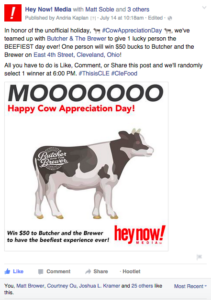Throughout the years, the snack industry has grown and evolved in response to the demands of the market and no generation has been as disruptive as millennials. They consume snacks voraciously with hugely different expectations for snack products than older generations.
While it can be difficult to keep up with such an ever-changing market, it’s important to stay on the cusp of millennial food trends. Here are four to keep in mind.
1. Meals over snacks
Ironically, millennials love snacking so much they’ve nearly destroyed the very concept of the snack. While snacks are traditionally defined as small food items eaten between meals, the millennial sees no need for a definition. A snack can be a meal and a meal can be a snack.
If a millennial is hungry, they eat. If they want a hamburger and fries, they eat a hamburger and fries. If they want a handful of cashews and a $1.25 bag of chips from the gas station down the street, that’s what’s on the menu.
While snack traditionalists balk at the prospect of replacing Sunday dinner with a protein bar, millennials don’t see the difference. Because they eat when they want to, convenience is a hugely important factor in food choice. A bag of chips in a desk drawer is more likely to win out over a salad bar that’s a bus ride away.
2. Taste over everything
While factors like health and convenience are important to millennial consumers, one value still trumps all others: taste. While about 50% of millennials choose health as an important factor in their snack selection, 80% indicate taste as important. A millennial may reach for a healthier snack, but the expectation is that it tastes just as delicious as an indulgent one.
As the most diverse generation to date, millennials are also causing the taste spectrum to evolve. While baby boomers reach for mint or vanilla, millennials prefer their snacks tangy and spicy with flavors like sriracha and coconut.
3. Digital over physical
According to Forbes, millennials report using digital devices for product education when they become interested in a brand. While listing your ingredients and methods of production on your packaging is a great way to communicate with your consumers, it’s no longer enough.
Millennials are the first generation whose lives are entwined with technology. They are not only searching for this information from your company, they are sharing their finds with friends and digesting product opinions from their peers.
Speak directly to your audience in digital channels and start a conversation with email, social media, and content marketing. Remember, a consumer is more likely to leave a negative review than a positive review, so every digital interaction is an opportunity to build goodwill.
4. Few over more
Ingredients, that is. Over 60% of millennials feel that snacks with fewer ingredients on the nutrition label are better for their health and nearly 80% indicate there is a correlation between recognizing each ingredient and putting trust in the brand. Additionally, 68% of millennials feel it is important for them to know where the ingredients originate. Was their apple grown in a local orchard, or was it mass-produced on a factory farm?
“Portlandia” gets it:
Keeping labels short, sweet and easy to read can plant seeds of trust among millennial consumers. Staying totally clear and transparent about your ingredients and their origins can also build positive interactions with your brand.
All this and more can be found in our latest eBook Click the button below to download your free copy and successfully marketing your snacks to millennials!




